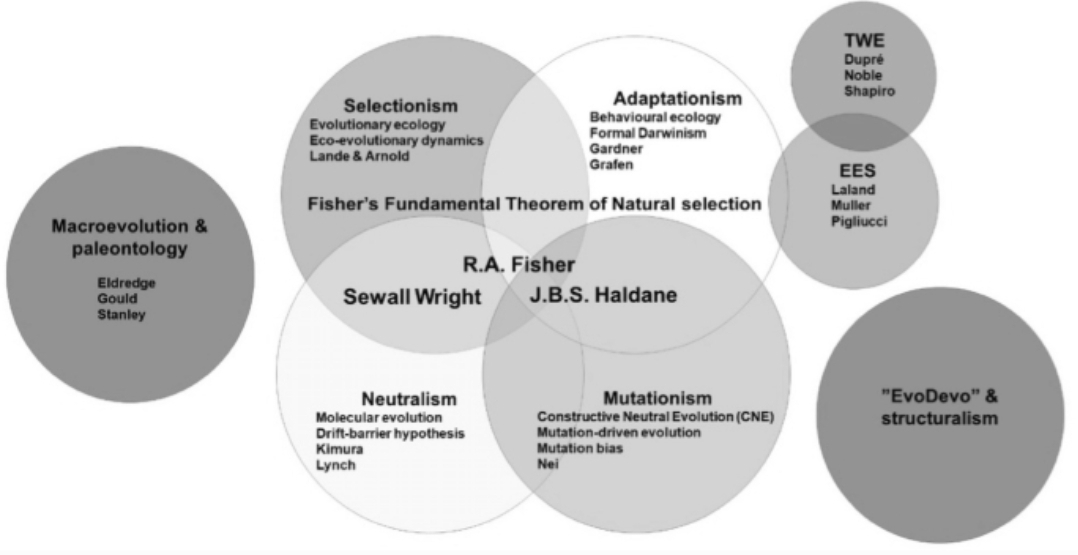Shifting Towards a Systems Biology Perspective
For decades, biologists operated under a "gene-centric" view of inheritance and development. This perspective, dominant throughout much of the 20th century, held that individual genes acted as the primary determinants of specific traits or phenotypes. It was a simplified model, often encapsulated in the phrase "one gene, one phenotype." This idea suggested a direct and linear relationship between a single gene and a corresponding trait, like a blueprint where each gene coded for a particular characteristic.
This gene-centric view was rooted in the groundbreaking work of Gregor Mendel, who demonstrated the inheritance of discrete traits in pea plants. Mendel's laws of inheritance provided a fundamental understanding of how genes are passed from one generation to the next, but the complexity of gene expression and interaction was not fully appreciated at the time.
The "one gene, one phenotype" concept was appealing in its simplicity and provided a framework for early genetic research. It led to important discoveries, such as identifying genes responsible for specific diseases like cystic fibrosis and Huntington's disease. However, this simplistic view had significant limitations.
Limitations of the Gene-Centric View:
Pleiotropy: Many genes influence multiple traits, a phenomenon known as pleiotropy. For example, a single gene might affect both eye color and susceptibility to a certain disease.
Epistasis: Genes do not act in isolation. The expression of one gene can be modified by the actions of other genes, a concept known as epistasis. This complex interplay can lead to unexpected phenotypic outcomes.
Environmental Influence: The environment plays a crucial role in shaping phenotypes. Factors like nutrition, stress, and exposure to toxins can significantly influence how genes are expressed and the resulting traits.
Incomplete Penetrance and Variable Expressivity: Even when a gene is associated with a particular trait, not everyone carrying the gene will exhibit the trait (incomplete penetrance). Moreover, the severity or manifestation of the trait can vary widely among individuals (variable expressivity).
Shifting Towards a Systems Biology Perspective:
In recent decades, with the advent of advanced technologies like genome sequencing and gene expression analysis, our understanding of genetics has become far more nuanced. The limitations of the gene-centric view have become increasingly apparent, leading to a shift towards a more holistic perspective known as systems biology.
Systems biology emphasizes the interconnectedness of genes, proteins, and other cellular components. It recognizes that genes operate within complex networks and pathways, influenced by both internal and external factors. This approach seeks to understand the emergent properties of biological systems, where the whole is greater than the sum of its parts.
Key Concepts in Systems Biology:
Gene Regulatory Networks: Genes are regulated by intricate networks of interactions, involving proteins, RNA molecules, and other regulatory elements. These networks control gene expression in a dynamic and context-dependent manner.
Epigenetics: Epigenetic modifications, such as DNA methylation and histone modifications, can alter gene expression without changing the underlying DNA sequence. These modifications can be influenced by environmental factors and inherited across generations.
Non-Coding RNA: The vast majority of the genome does not code for proteins. Non-coding RNAs play diverse roles in gene regulation, development, and disease.
Systems-Level Analysis: Systems biology employs computational models and high-throughput data analysis to understand the complex interactions within biological systems.
The shift from a gene-centric to a systems biology perspective represents a paradigm shift in our understanding of genetics and biology as a whole. It acknowledges the complexity of life and the intricate interplay of genes and environment. This holistic approach is crucial for advancing our knowledge of human health, disease, and evolution. It paves the way for personalized medicine, where treatments are tailored to an individual's unique genetic and environmental profile.
Furthermore, systems biology has implications beyond human health. It can be applied to understand ecological systems, agricultural practices, and even industrial processes. By embracing the complexity of biological systems, we can unlock new insights and solutions to some of the most pressing challenges facing our world today.




Comments
Post a Comment